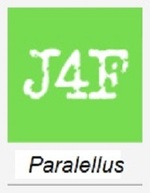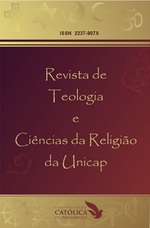A JANGADA DO SELF: USOS SOTERIOLÓGICOS DO EU E DO NÃO-EU NO BUDDHISMO ANTIGO
DOI:
https://doi.org/10.25247/paralellus.2019.v10n24.p279-294Palavras-chave:
Buddhismo antigo, cânone Pali, não-eu, soteriologiaResumo
O objetivo deste artigo é sugerir que os ensinamentos Buddhistas sobreanattā(não-eu) não devem ser entendidos como uma negação categórica do eu, mas fazem parte de uma estratégia soteriológica comumente empregada pelo Buddha, de utilizar algo como ferramenta para o seu próprio fim. Tomando o kamma(ação) como o elemento central que estrutura todos os ensinamentos, podemos pensar na identificação do eu como um tipo de ação. Algumas instâncias desta ação serão hábeis e condutoras à libertação, e outras inábeis e condutoras ao sofrimento. Com isso em mente, este artigo irá analisar algumas ações inábeis do eu e do não-eu em suttasselecionados do Cânone Pali, mostrando como se encaixam na estratégia do Buddha de se utilizar de elementos como ferramentas para o abandono desses próprios elementos. Nessa perspectiva, o eu não é negado em absoluto desde o início do caminho, mas aprende-se a usa-lo de forma hábil como um meio de abandoná-lo.
THE RAFT OF THE SELF: SOTERIOLOGICAL USES OF SELF AND NOT-SELF IN ANCIENT BUDDHISM
ABSTRACT
The purpose of this article is to suggest that the Buddhist teachings on anattā (not-self) should not be understood as a categorical denial of the self, but constitute a soteriological strategy commonly employed by the Buddha, of using something as tool for its own demise.Taking kamma (action) as the main framework that structure all the other teachings, we can think of self-identification as a kind of action. Some instances of this action will be skillful and will lead to liberation, while others will be unskillful and will lead to suffering.With this in mind, the present article will analyze some skillful actions of self and not-self in selected suttas of the Pali canon, showing how they fit into the Buddha’s overall strategy of using elements as tools for their own demise. In this perspective, the self is not denied from the beginning of the path, but one learns how to use it skillfully in order to let go of it.
Downloads
Referências
DENNETT, Daniel. The Self as a Center of Narrative Gravity. In: KESSEL, F.; COLE, P; JOHNSON, D (org.). Self and consciousness: multiple perspectives. Hillsdale, NJ: Erlbaum, 1992.
Mahathera, Nyanatiloka. The Buddha’s teachings of egolessness: anattā. Colombo: The Word of the Buddha Pub. Committee, 1957, p. 103-115.
Thānissaro Bhikkhu. Skill in questions. Valley Center, CA: Metta Forest Monastery, 2010.
Thānissaro Bhikkhu. Selves and not-self: The Buddha’s teachings on anattā. Valley Center, CA: Metta Forest Monastery, 2011.
Thānissaro Bhikkhu. Handful of Leaves: an anthology from the Sutta Piṭaka. Valley Center, CA: Metta Forest Monastery, 2014.
Downloads
Publicado
Edição
Seção
Licença
A submissão de originais para a Paralellus implica a transferência, pelos autores, dos direitos de publicação eletrônica. Os direitos autorais para os artigos veiculados neste periódico são do autor; todavia, são da revista os direitos sobre a primeira publicação. Os autores somente poderão fazer uso dos mesmos resultados em outras publicações se indicarem, claramente, que a Paralellus foi o meio originalmente utilizado. Em decorrência do fato de ser a Paralellus uma revista de acesso público, é permitida a utilização gratuita dos artigos em aplicações educacionais e/ou científicas não comerciais, desde que respeitando-se a exigência de citação da fonte (Texto atualizado em 16-11-2020).

















